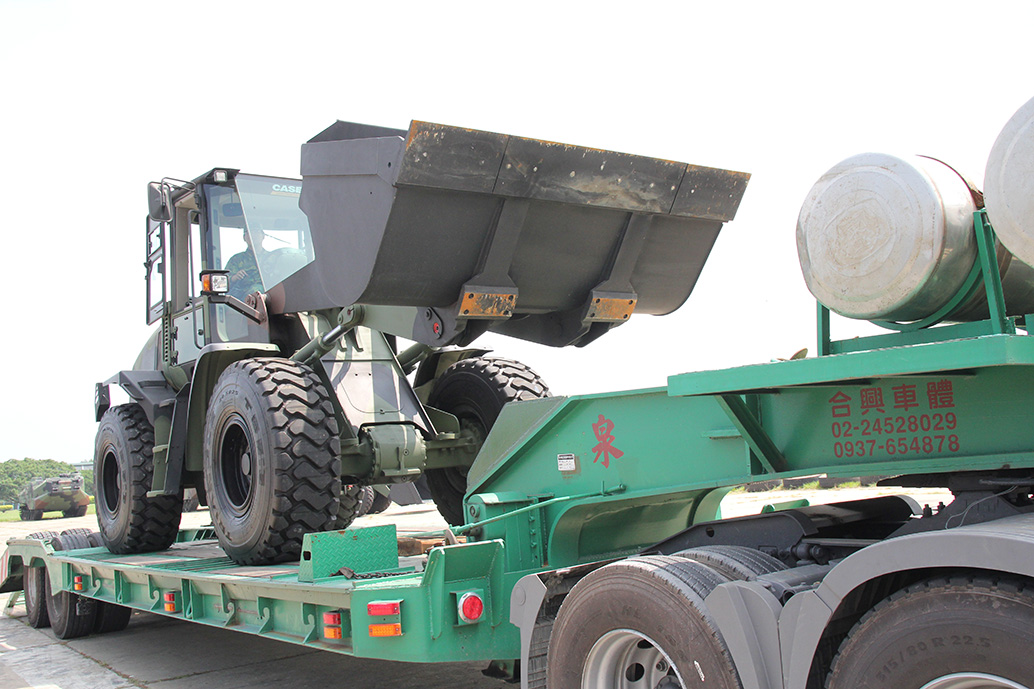- Minister's Foreword
- Introduction
- Part 1. Strategic Environment
- Part 2. National Defense Policy
- Chapter 3. National Defense Policy Plans
- Chapter 4. National Defense Policy Implementation
- Section 1. Enhance Force Buildup Efforts
- Section 2. Devise Well-planned Transformation of Military Service
- Section 3. Reform to National Defense Legal System
- Section 4. Safeguard Military Human Rights
- Section 5. Expand Military Exchanges
- Section 6. Enhance Crisis Response
- Section 7. Improve Care for Service Members
- Section 8. Promote Gender Equality
- Part 3. National Defense Capabilities
- Chapter 5. National Defense Force
- Section 1. Introducing the National Defense Organization
- Section 2. Improving Joint Operations Effectiveness
- Section 3. Maintaining Continuous Operational and Training Readiness
- Section 4. Consolidating Information and Electronic Warfare Capabilities
- Section 5. Refining Logistics Support
- Section 6. Consolidating Reserve Force
- Section 7. Forging Intangible Combat Capabilities
- Chapter 6. National Defense Resources
- Chapter 5. National Defense Force
- Part 4. All-out Defense
- Appendixes
In order to achieve the goals of precise logistics management and rapid logistics support, the ROC Armed Forces have been actively integrating the logistic capabilities of the Army, Navy and Air Force while enhancing existing IT systems in recent years. We have been promoting outsourcing our logistics and refining the contract management mechanism in order to preserve our logistic potential. In addition, we are vigorously considering to phase out obsolete equipment, fine tune integrated logistic support (ILS) planning for new equipment, and improve the quality of living quarters of service members so as to improve overall support and service performance.
I. Exerting the Full Potential of Logistics
To reap the combined effectiveness of professional division of labor and integration of one's profession and abilities, we have extensively reviewed the current status of our logistic operations, and revised those no longer applicable to date to simplify the logistic process involved. By so doing, we have stipulated the Logistics Policy Guidelines of the ROC Armed Forces of 29 articles in 13 categories issued to the entire Armed Forces. Furthermore, we have also enhanced and integrated functions of our information system to exert the full potential of logistics.
II. Effectively Maintaining Equipment Readiness
In light of various new weapon systems entering our order of battle in recent years, we have adopted the ILS information system to refine full life cycle management mechanism for them in order to maintain stringent control of readiness of all weapon systems. In addition, we have consolidated maintenance and supply resources, and through prepositioning, forward acquiring and status prediction of them we may allot them in a timely and flexible fashion to ensure that our equipment are fully prepared.
III. Improving Effectiveness of Maintaining Materiel
We have been checking the stockpile in the inventory to critically review new requirements, pushing forward integration of maintenance capabilities of all service branches, and enhancing the efforts of integrated logistics management teams, so as to better monitor fluctuation of maintenance costs and establish a comprehensive suite of core maintenance capabilities. In 2014, a total of 36,000 obsolete items in 1,200 categories, including major defense equipment, supporting equipment, communications, and wheeled vehicles, were phased out, saving the maintenance costs of NT$ 730 million, effectively reducing our financial burdens while improving the effectiveness of our equipment maintenance efforts.
IV. Implementing Energy Saving Policies
On the condition of not disrupting military exercises and training missions, we have been providing assistance to local governments by carrying out cloud seeding as well as water supply and delivery operations. We have also adopted the principle of use resources only where it counts, don't hoard resources where it matters and employ resource saving measures, to regularly review overall savings, compile a data of fuel, water and electricity consumed, and compare chronicled information to verify that we have achieved energy saving objectives stipulated by the Executive Yuan.
V. Promoting Sequential Outsourcing of Logistics
To drive the Jingtsui Program for force restructuring and to build a volunteer force, we have focused our scarce defense resources upon our major operational forces, and retained core logistic capabilities after reviewing all our logistic activities. In accordance with Article 22 of the National Defense Act regarding outsourcing to the private sector, items such as meals preparation, supplies, transport, and facilities maintenance have been outsourced to civilian entities in order to reduce personnel requirements of general service of the ROC Armed Forces. To improve personnel training and ensure that experiences are handed down effectively, we have established a contract management training capacity in 2014. Thereafter, in addition to supporting Armed Forces organization restructuring as well as streamlining, we have been reviewing the organization of our logistic units, our domestic market environment and earmarked budgets to carry on with sequential outsourcing accordingly to attain the goals of national defense working in tandem with public livelihood.

Meals preparation, supplies, transport and facilities maintenance and the like have been outsourced to civilian entities according to the Article 22 of the National Defense Act in order to reduce personnel requirements of general service of the ROC Armed Forces. The picture depicts a civil contractor doing equipment transport.
VI. Integrating Logistic Data Management
To enhance logistic data management performance, big data analytics are employed to merge and adjust 8 information systems that include our aircraft management system. We have been adopting a storage barcode system to improve the performance of our supply and maintenance operations. Chronicled results of exercise validation are used as a reference for reviewing and improving logistic systems for the purpose of force application, and we may thus have a timely and precise picture of the logistic status and requirements of the current force, so as to effectively improve our decision-making and reduce manual workload.
